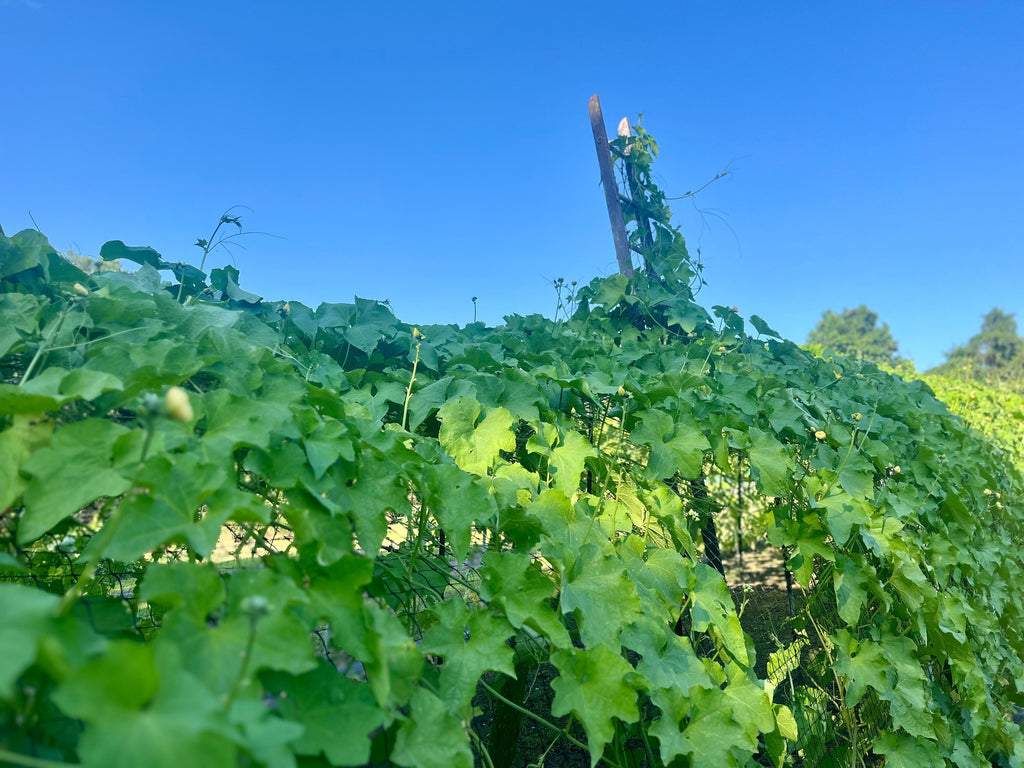What Is a Loofah and How Does It Grow? A Guide to the Plant Behind the Natural Sponge

I started growing loofahs in 2021. There’s a unique kind of joy that comes from holding a finished product in your hands—especially when you grew it yourself. I’ll never forget the first time I harvested a loofah from my garden, peeled it open, and saw the intricate natural sponge inside. It felt like unlocking a secret the earth had been waiting to share. Growing something from seed that becomes part of someone’s daily self-care routine is deeply satisfying. It reminds me that wellness doesn’t have to be manufactured in a lab—it can be grown, nurtured, and harvested with care. The loofah plant taught me that sustainability and beauty can coexist. When I realized that what I grew could replace wasteful products and offer something nourishing instead, it sparked the idea to turn my garden into a business. There’s nothing like the pride of knowing your hands cultivated something useful, beautiful, and rooted in purpose.
Where Do Loofahs Come From and How Do They Grow?
Loofahs, often mistaken for sea sponges, are actually the mature fruit of a tropical gourd in the cucumber family (genus Luffa). Native to Southeast Asia and widely cultivated in warm climates around the world, loofahs begin as flowering vines that love sunlight and heat. They require a long growing season—about 150 to 200 frost-free days—and thrive when trellised, which helps keep the fruit straight and clean. After flowering, the fruit grows long and green like a zucchini. When fully ripened and left to dry on the vine, the interior fibrous network develops into the familiar sponge texture. Once harvested and peeled, the loofah is cleaned, dried, and ready to be used. This transformation from seed to sponge is a beautiful reminder of nature’s ingenuity, and a rewarding process for gardeners looking to grow their own functional and sustainable body care product.

Where Do Loofah Plants Grow Best?
Loofah plants are tropical and subtropical vines that flourish in hot, humid conditions with plenty of sunshine and space to climb. They grow best in USDA zones 7 and above, where the growing season is long and warm. In cooler climates, loofahs can still be grown successfully, but they often require an early indoor start and careful transplanting after the last frost. Rich, well-drained soil and a sturdy trellis are key to supporting their rapid growth and heavy fruit. These vigorous vines can reach over 20 feet in one season! In ideal conditions, they’ll flower by midsummer and set fruit shortly after. Patience is essential: the sponge texture develops only if the fruit is allowed to fully mature. Whether you're farming acres or gardening in a backyard, loofah plants can thrive with a little intention—and offer a beautiful example of self-sufficiency in action.
What Can You Do With a Loofah Sponge?
Loofah sponges are incredibly versatile, biodegradable tools that go far beyond the shower. Traditionally used as natural exfoliators, they gently remove dead skin cells and stimulate circulation, making them a favorite in eco-conscious skincare routines. But their uses don’t stop at the bathroom. Sliced loofah rounds make excellent dish scrubbers, free from synthetic microplastics, and can safely clean cookware without scratching. Loofahs can also be composted after use, returning to the earth with zero waste. Creative makers turn them into soap embeds, seed-starting pots, or even household cleaning pads. With just one plant, you can grow several sponges each season—making it a sustainable choice for home and body. At Heirloom of Eden, we see loofahs as more than a tool—they’re a symbol of circular wellness. By growing and using loofahs, you reconnect with nature, reduce your environmental footprint, and bring purpose back to simple, everyday rituals.
